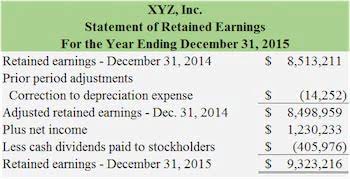
The third entry requires Income Summary to close to the Retained Earnings account. To get a zero balance in the Income Summary account, there are guidelines to consider. All accounts can be classified as either permanent (real) or temporary (nominal) (Figure 5.3).

Example 2: Closing Dividends in a Manufacturing Firm
- The Income Summary account has a new credit balance of $4,665, which is the difference between revenues and expenses (Figure 5.5).
- Otherwise, the balances in these accounts would be incorrectly included in the totals for the following reporting period.
- Also known as real or balance sheet accounts, these are general ledger entries that do not close at the end of an accounting period but are instead carried forward to subsequent periods .
- In contrast, closing entries are made after the financial statements have been prepared and reviewed.
- Closing entries also help businesses comply with tax regulations, such as those outlined in the Internal Revenue Code (IRC), by ensuring that reported taxable income is accurate.
- The third entry requires Income Summary to close to the Retained Earnings account.
To ensure your financials accurately represent your business activity, the Income Summary account is essential. Next, adjustments are made to account for any accrued expenses, depreciation, and other necessary end-of-year entries. These adjustments help in aligning the financial records with the actual financial position of the company. Once adjustments are completed, the temporary accounts, such as revenue and expense accounts, are closed to Bookkeeping for Consultants the income summary account.

Preparing the Final Accounts
The process begins with identifying and aggregating balances in temporary accounts, typically sourced from the adjusted trial balance. Next, transfer all expense account balances to the income summary account. The total expenses are calculated and transferred to the income summary account. This zeros out the expense accounts and combines their effect with the revenues in the income summary by crediting the corresponding expenses. These permanent accounts form the foundation of your business’s balance sheet. However, you might wonder, where are the revenue, expense, and dividend accounts?

HighRadius Named As A Major Player For Treasury & Risk Management Software By IDC

Their balances carry into future periods, providing a continuous record of a company’s financial position. For example, the balance in a cash account at the end of one period becomes the starting balance in the next. This continuity is essential for assessing trends and making informed decisions about investments, financing, and operations. Closing entries are essential in financial accounting, marking the transition from one accounting period to the next.
Grasping the difference between temporary and permanent accounts is key to understanding the accounting cycle. They include revenues, expenses, and ledger account dividends, and their purpose is to track the financial comings and goings within a specific period. These categories are crucial for the process of identifying potential deductions during the financial year. Once that period concludes, these accounts are emptied, ready to capture fresh data with the start of a new cycle.
Understanding Closing Entries in Accounting: Purpose and Process
- From the Deskera “Financial Year Closing” tab, you can easily choose the duration of your accounting closing period and the type of permanent account you’ll be closing your books to.
- This ensures that the financial statements reflect only the current accounting period’s activities, adhering to GAAP standards.
- Let’s talk about how you can make closing entries as smooth and accurate as possible, even when using automated tools.
- The income summary account must be credited and retained earnings reduced through a debit in the event of a loss for the period.
- These accounts carry forward their balances throughout multiple accounting periods.
- This ensures that all data is accurate and reflects the business’s financial position at closure.
This reflects the reduction in retained earnings due to distributions to shareholders by debiting retained earnings. In the above case, a net credit of ₹ 55,00,000 or profit will finally be moved to the retained earnings account by debiting the Income summary account. The accounting assumption here is that any profit earned during the period needs to be retained for use in future company investments. The Income Summary account, which reflects the net income or loss, is then closed to Retained Earnings (or Capital).
Final Checklist Before Closing the Period
It’s important to carefully follow each step of the closing process in order to properly close the books at the end of an accounting period. You can find this by taking a closing entries look at the trial balance or income statement in your accounting system. Understanding the accounting cycle and preparing trial balances is a practice valued internationally.




